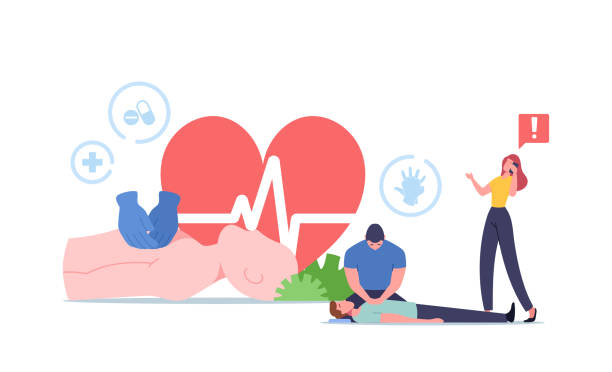Health education is evolving—no longer confined to textbooks or emergency drills. It’s about understanding how the body, behavior, and environment intersect. Among the most vital lessons for anyone training in CPR or first aid is the reality of bloodborne pathogens and sexually transmitted diseases (STDs).
When responders understand the risks and preventive measures, they’re not just learning to save lives—they’re learning to protect them holistically. This connection between bloodborne certification and awareness of infection transmission is reshaping how we approach safety, compassion, and preparedness.
The Hidden Risks in Emergency Response
Every CPR trainee begins with the same motivation: to be ready when someone’s life depends on it. Yet, few realize that offering lifesaving aid sometimes comes with hidden biological risks. During resuscitation, bleeding injuries, or first aid situations, contact with blood or other bodily fluids can expose responders to infections such as hepatitis B, hepatitis C, or HIV.
This is where bloodborne certification becomes essential. It equips trainees with the knowledge and skills to prevent exposure during emergencies. They learn how pathogens spread, how to use protective barriers, and how to handle biohazard materials safely. In short, it turns good intentions into informed, responsible action.
Understanding STD transmission fits naturally into this education. While not all sexually transmitted infections are spread through emergency contact, knowing how viruses like HIV function helps trainees appreciate why universal precautions matter. The goal isn’t fear—it’s respect for biological realities.
Connecting CPR and Sexual Health Awareness
The same principles that guide CPR—prevention, quick response, and awareness—also apply to sexual health. In both cases, education saves lives. When people understand how infections spread, they’re more likely to act responsibly, whether that means using protective gear during first aid or seeking affordable STD testing after potential exposure.
For CPR trainees, this awareness bridges two crucial areas of public health: emergency response and disease prevention. Both rely on knowledge, not assumptions. Knowing that an infection can’t be identified by appearance alone reinforces the importance of universal precautions—treating every situation with the same level of care and safety.
Moreover, introducing STD awareness during CPR and first aid training humanizes the learning experience. It reminds trainees that health isn’t just about cardiac rhythm—it’s also about respect, consent, and informed action beyond the emergency scene.
The Role of Bloodborne Certification in Prevention
Modern bloodborne certification programs go beyond basic first aid. They cover the science behind transmission risks, the correct use of gloves, masks, and other barriers, and the protocols for cleaning and disposing of contaminated materials. For CPR trainees, this knowledge is empowering—it means they can act confidently without compromising safety.
Just as CPR helps buy time during a cardiac arrest, infection control training helps preserve long-term health. Both require calmness, preparation, and precision. Understanding bloodborne risks ensures that responders can help others without putting themselves or future patients in danger.
The certification also reinforces an ethical principle: protecting oneself is part of protecting others. Safe responders are sustainable responders.
Affordable STD Testing: Completing the Circle of Care
While training prepares individuals to avoid exposure, life’s unpredictability sometimes leads to uncertainty. If someone suspects they’ve been exposed to bodily fluids during an emergency, timely testing becomes essential. Access to affordable STD testing ensures that people can act quickly and confidently, without financial or social barriers.
This accessibility not only reduces anxiety but also promotes a culture of responsibility. It encourages individuals to see testing as a normal, proactive health step—not a source of shame. Just as CPR skills empower someone to respond during a crisis, getting tested empowers them to take charge of their own wellbeing afterward.
Incorporating this mindset into CPR education—teaching trainees what to do after potential exposure—completes the circle of care. It reinforces the idea that protection, prevention, and follow-up are all parts of one continuous commitment to safety.
Beyond the Classroom: Building a Culture of Care
When CPR trainees grasp how STDs and bloodborne pathogens operate, they bring a higher level of professionalism and empathy to every interaction. They understand that behind every rescue scenario lies a human being—vulnerable, complex, and deserving of dignity.
Communities that promote affordable STD testing and comprehensive bloodborne certification create a ripple effect. More people become educated about how infections spread. Fewer misconceptions persist about who is at risk. And as training becomes normalized, stigma begins to fade.
In workplaces, schools, and volunteer organizations, these combined lessons foster not just safer environments, but more compassionate ones. They remind us that the point of first aid and testing alike is not just survival—it’s the preservation of trust and health.
Knowledge as the Ultimate Safety Gear
Protective gloves and masks are vital, but the most powerful safeguard any responder carries is knowledge. Understanding bloodborne pathogens and STD transmission gives CPR trainees the confidence to act decisively without hesitation or fear. It transforms uncertainty into informed compassion.
When paired with bloodborne certification, this knowledge ensures safety in every step—from providing chest compressions to disposing of contaminated materials. And when coupled with accessible resources like affordable STD testing, it extends care beyond the emergency moment into long-term wellbeing.
The Takeaway: Prevention is the New CPR
In the end, lifesaving isn’t only about reviving the heart—it’s about protecting the body and community from preventable harm. CPR trainees who embrace both emergency readiness and infection awareness embody a new kind of health leadership—one rooted in knowledge, empathy, and prevention.
By pursuing bloodborne certification and understanding the role of affordable STD testing, they become not only responders but educators, advocates, and guardians of public health. Because true first aid isn’t just what happens in the moment—it’s the lifelong commitment to learning, caring, and protecting others with both skill and compassion.


